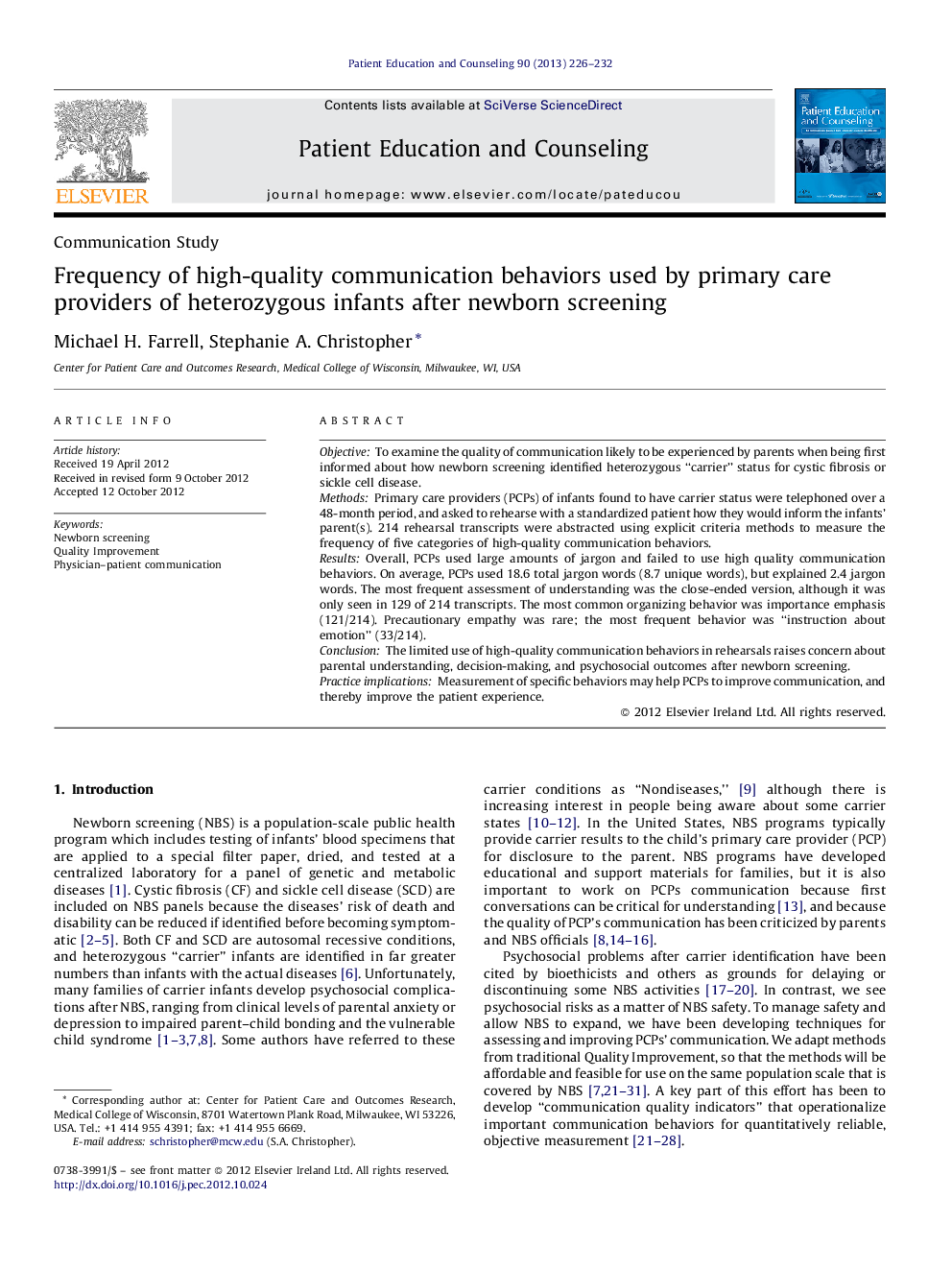| کد مقاله | کد نشریه | سال انتشار | مقاله انگلیسی | نسخه تمام متن |
|---|---|---|---|---|
| 6153800 | 1246058 | 2013 | 7 صفحه PDF | دانلود رایگان |
ObjectiveTo examine the quality of communication likely to be experienced by parents when being first informed about how newborn screening identified heterozygous “carrier” status for cystic fibrosis or sickle cell disease.MethodsPrimary care providers (PCPs) of infants found to have carrier status were telephoned over a 48-month period, and asked to rehearse with a standardized patient how they would inform the infants' parent(s). 214 rehearsal transcripts were abstracted using explicit criteria methods to measure the frequency of five categories of high-quality communication behaviors.ResultsOverall, PCPs used large amounts of jargon and failed to use high quality communication behaviors. On average, PCPs used 18.6 total jargon words (8.7 unique words), but explained 2.4 jargon words. The most frequent assessment of understanding was the close-ended version, although it was only seen in 129 of 214 transcripts. The most common organizing behavior was importance emphasis (121/214). Precautionary empathy was rare; the most frequent behavior was “instruction about emotion” (33/214).ConclusionThe limited use of high-quality communication behaviors in rehearsals raises concern about parental understanding, decision-making, and psychosocial outcomes after newborn screening.Practice implicationsMeasurement of specific behaviors may help PCPs to improve communication, and thereby improve the patient experience.
Journal: Patient Education and Counseling - Volume 90, Issue 2, February 2013, Pages 226-232
